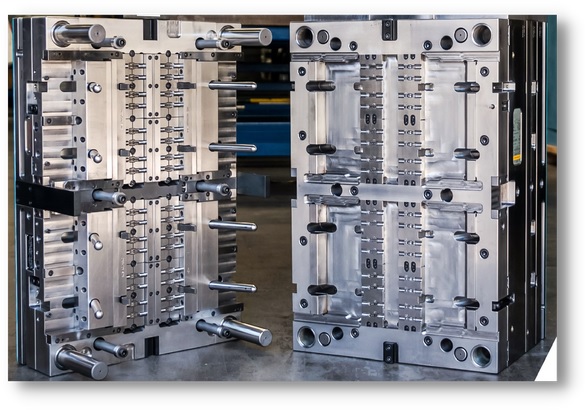Mold making is a fundamental process in manufacturing, enabling the mass production of complex and precise parts across various industries. This process involves creating a mold, or hollow cavity, into which materials like plastic, metal, or glass are poured or injected to form products. Understanding the techniques and applications of mold making reveals its crucial role in modern production and innovation.
The Mold Making Process
Mold making begins with designing the mold, which is typically based on a 3D model of the final product. This design phase is critical, as it determines the shape, functionality, and quality of the produced parts. The mold is then created using various techniques, depending on the material and the complexity of the design.
Types of Mold Making Techniques
- Injection Molding:
- Process:Molten material, usually plastic, is injected into a mold cavity under high pressure. Once cooled, the material hardens into the shape of the mold.
- Applications:Widely used for producing high-volume plastic parts, such as automotive components, consumer electronics, and packaging.
- Blow Molding:
- Process:A heated plastic parison (a tube of plastic) is inflated inside a mold cavity until it takes the shape of the mold.
- Applications:Commonly used for making hollow plastic parts like bottles, containers, and tanks.
- Compression Molding:
- Process:Material is placed into a heated mold cavity, compressed to fill the mold shape, and then cooled.
- Applications:Used for making larger, more complex parts from materials like rubber, thermoset plastics, and composites.
- Rotational Molding:
- Process:Material is placed inside a mold, which is then heated and rotated along two perpendicular axes. The material coats the interior of the mold, forming a hollow part as it cools.
- Applications:Ideal for creating large, hollow, and seamless parts like tanks, kayaks, and playground equipment.
- Die Casting:
- Process:Molten metal is forced into a metal mold cavity under high pressure. Once solidified, the metal part is ejected.
- Applications:Commonly used for making metal parts with intricate details, such as automotive components, machinery parts, and tools.
Applications of Mold Making
1. Automotive Industry
- Example:Production of Engine Components Mold making is essential in the automotive industry for producing engine components, dashboards, bumpers, and interior panels. Injection molding, in particular, is used to create lightweight and durable plastic parts that meet strict safety and performance standards.
2. Consumer Electronics
- Example:Smartphone Cases and Components The consumer electronics industry relies heavily on mold making to produce components like smartphone cases, keyboards, and housings for electronic devices. Precision and consistency are critical in ensuring that these parts fit together perfectly and function as intended.
3. Medical Devices
- Example:Custom Medical Implants Mold making is vital for producing medical devices such as prosthetics, dental implants, and surgical instruments. These products require high precision and biocompatibility, making mold making techniques like injection molding and compression molding ideal for their manufacture.
4. Packaging Industry
- Example:Beverage Bottles and Food Containers Blow molding and injection molding are widely used in the packaging industry to produce bottles, containers, and caps. These processes ensure that packaging is lightweight, durable, and capable of protecting the contents effectively.
5. Toy Manufacturing
- Example:Action Figures and Building Blocks Mold making is crucial in the toy industry for producing items like action figures, building blocks, and board game pieces. Injection molding allows for high-volume production with detailed features and consistent quality.
Benefits of Mold Making
- High Precision:Mold making techniques provide high precision and accuracy, ensuring that parts meet exact specifications.
- Cost-Effective:Once the mold is created, the cost per part decreases significantly, making it ideal for mass production.
- Versatility:Mold making can be used with various materials, including plastics, metals, and ceramics, to create diverse products.
- Consistency:Molds allow for the consistent production of identical parts, maintaining quality across large volumes.
- Efficiency:Automated mold making processes reduce production time and labor costs, enhancing overall manufacturing efficiency.
Conclusion
Mold making is an integral part of modern manufacturing, enabling the production of a wide range of products with high precision and efficiency. From automotive components and consumer electronics to medical devices and packaging, the applications of mold making are vast and varied. By leveraging advanced techniques such as injection molding, blow molding, and die casting, manufacturers can produce complex and high-quality parts that meet the demands of today’s industries. As technology continues to evolve, mold making will remain a critical process in driving innovation and production excellence.

